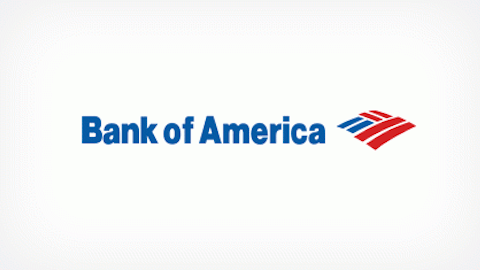
Goldman Sachs Group, Inc. (NYSE:GS) was able to beat both top-line and bottom-line estimates, but revenue from its biggest segment fell by 10%. Similarly, while Morgan Stanley (NYSE:MS)’s earnings were also above the Wall Street expectations, the firm failed to impress investors as its fixed-income operations continue to under-perform.
The common ratios of both of these institutions have fallen under new capital-requirement rules and, according to Federal Reserve, they could come under pressure in a stressed scenario. However, unlike Morgan Stanley (NYSE:MS), Goldman Sachs has been able to improve its return on average common shareholders’ equity.
In the first quarter of 2013, Goldman Sachs Group, Inc. (NYSE:GS)’s net income increased 7.2% to approximately $2.3 billion while revenue rose 1.4% to about $10.1 billion. On the other hand, Morgan Stanley swung to a profit of $958 million as opposed to a loss of $119 million in the same quarter last year. Net revenue of $8.2 billion climbed in the quarter from $6.9 billion a year ago, showing a year-over-year increase of 17.8%.

Goldman Sachs recorded a drop of 7% in revenue from trading in currencies, commodities and fixed-income securities to $3.2 billion. As a result, total institutional client-services revenue fell 10% to $5.1 billion.
On the other hand, Morgan Stanley (NYSE:MS)’s revenue from fixed-income securities plummeted by 42% to $1.5 billion. The March quarter was a difficult one for banks due to the budget impasse and the sluggish performance of Europe; but still, other banks, including Goldman, have been able to deliver relatively better results than Morgan Stanley.
Goldman Sachs Group, Inc. (NYSE:GS)’s investing and lending segment delivered revenue of approximately $2.1 billion, showing an increase of 8.2% from 2012. This is the second-largest contributor to the top line behind institutional client services.
In investment banking, Goldman Sachs outperformed Morgan Stanley by posting a 35% revenue increase.

Meanwhile, Morgan Stanley’s wealth-management group reported strong earnings; its income increased by 29% from last year to $256 million as the unit’s revenue rose 5.4% to approximately $3.5 billion. Revenue in the investment- banking division, a part of wealth management, rose 15% to $1.2 billion (as shown in the graphic above).
Net revenue from its institutional-securities business, which includes advisory services as well as fixed income and commodities sales and equity sales, increased by 30% from the same quarter last year to approximately $4.1 billion. This unit swung from a net loss of $302 million in the previous quarter to a profit of $663 million.
In this quarter, institutional securities became the biggest contributor to Morgan Stanley’s top and bottom lines, responsible for half of the bank’s total revenue and more than 60% of total income.

Goldman Sachs Group, Inc. (NYSE:GS)’s interest income fell 6% to $925 million, while Morgan Stanley made a profit of $185 million as opposed to a loss of $59 million in the year-ago-quarter.
| Banks | 2012 | 2013 | Change |
|---|---|---|---|
| Goldman Sachs | $981Mn | $925Mn | -6% |
| Morgan Stanley | ($59Mn) | $185Mn | – |
Goldman Sachs Group, Inc. (NYSE:GS)’s return on equity, or ROE, rose to 12.4% from 10.7% of year ago, while Morgan Stanley’s ROE fell to 7.6% from 9.2% in the corresponding period. In the last six months, Goldman’s stock has trailed Morgan Stanley, although both have risen by 14% and 24%, respectively. At the moment, Morgan Stanley’s stock is about four times more expensive than that of Goldman Sachs, which is evident in the P/E ratios of both firms. Morgan Stanley (NYSE:MS) gives a lower yield and a lower ROE.
| Goldman Sachs | Morgan Stanley | |
|---|---|---|
| Stock 6M | 14.23% | 24.07% |
| P/E | 9.84 | 41.07 |
| EPS | 14.49 | 0.53 |
| Yield | 1.40% | 0.90% |
| Beta | 1.59 | 2.25 |
| ROE | 12.4% | 7.6% |
Capital requirements
Goldman Sachs and Morgan Stanley (NYSE:MS)’s regulatory capital requirements fell in the most recent quarter following the implementation of Basel 2.5. The Tier 1 common ratio is a measure of a bank’s common equity to its assets and plays a crucial role in the stress test. If any bank wants to pay dividends or implement a buyback program then this ratio must be at least 5%.


